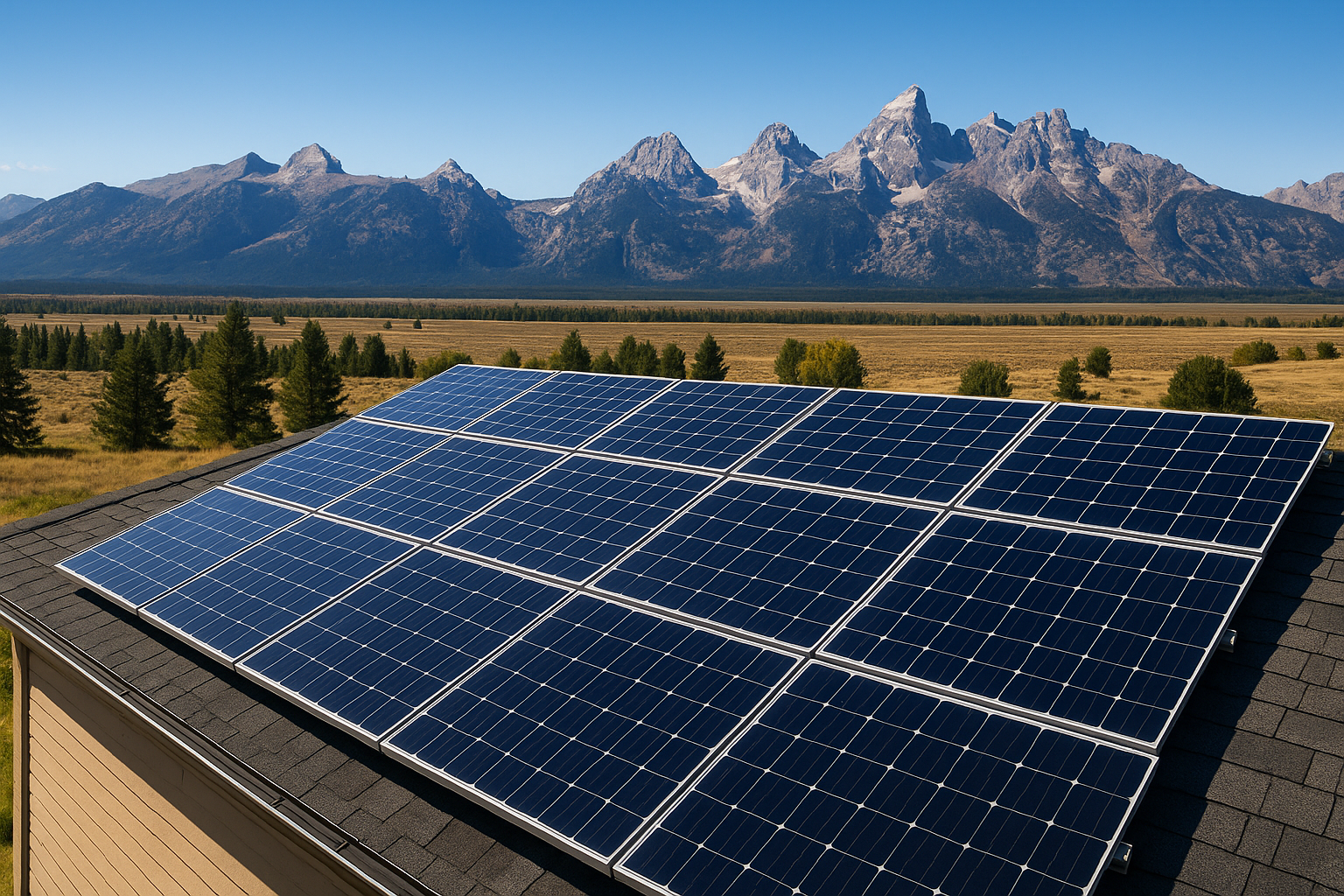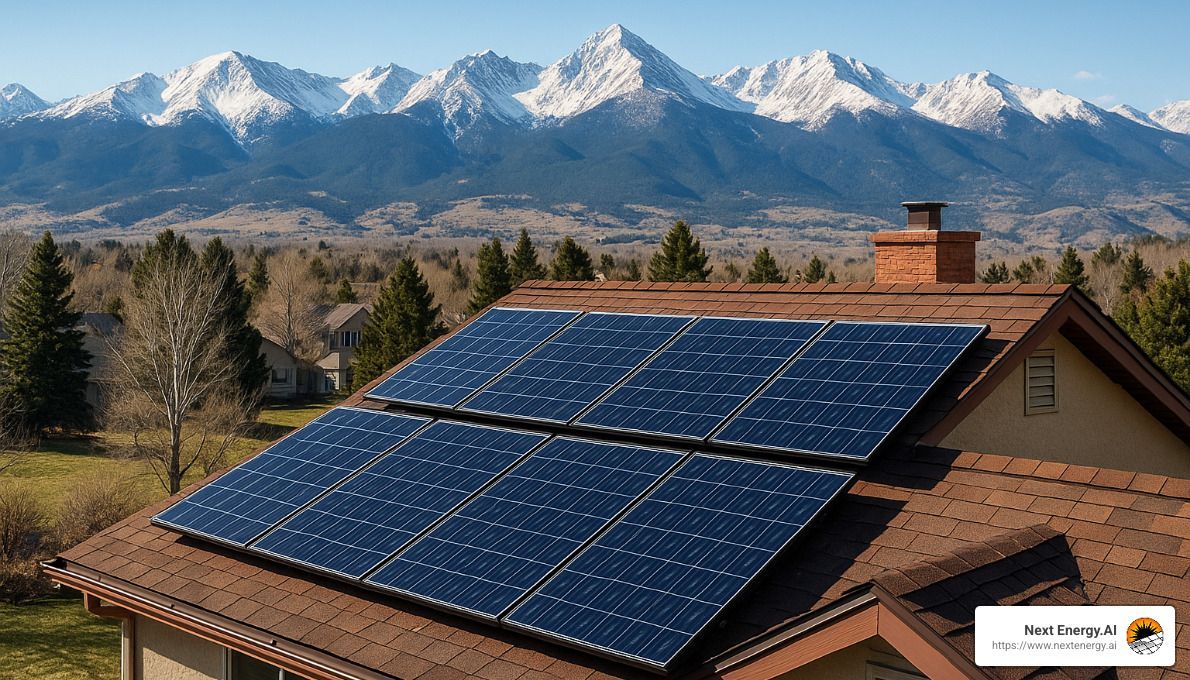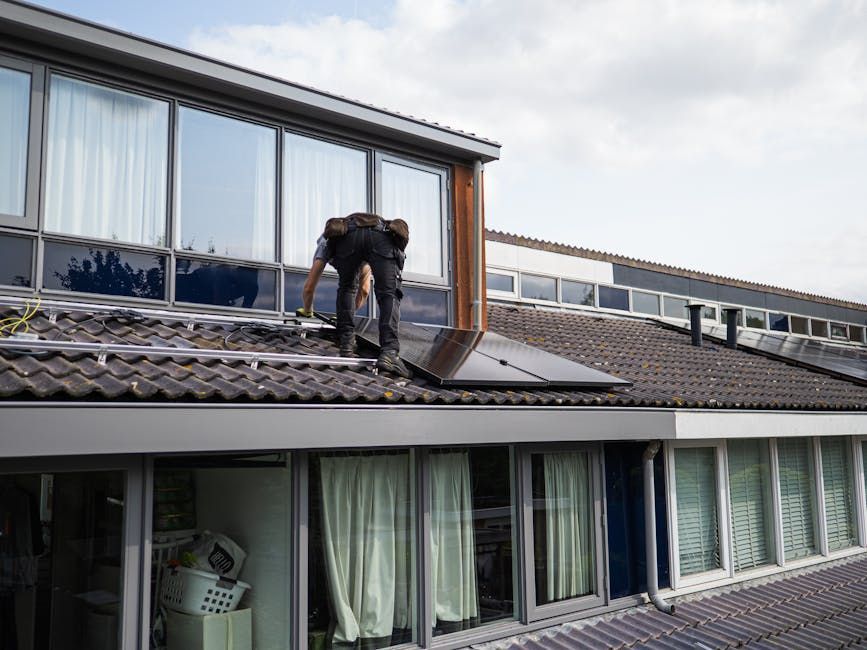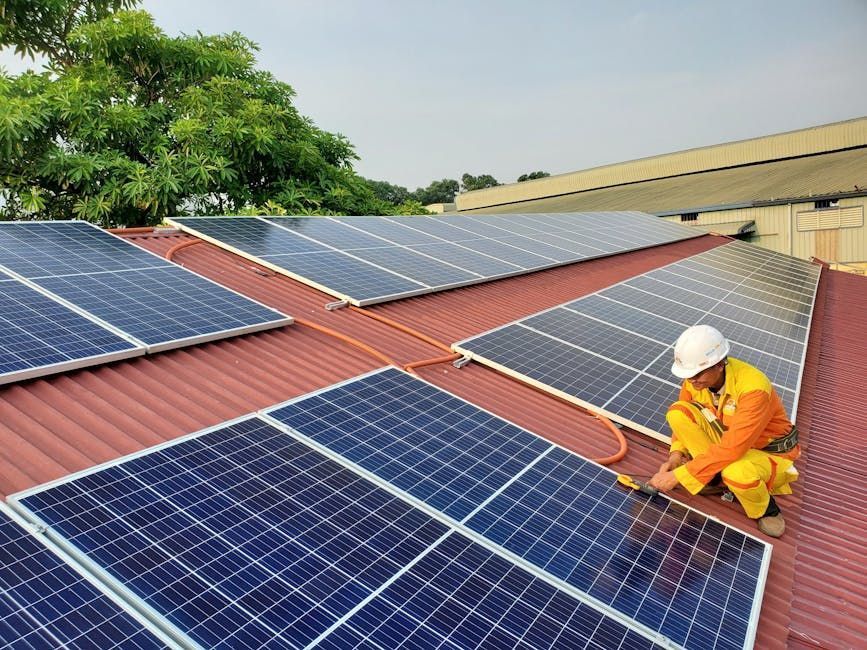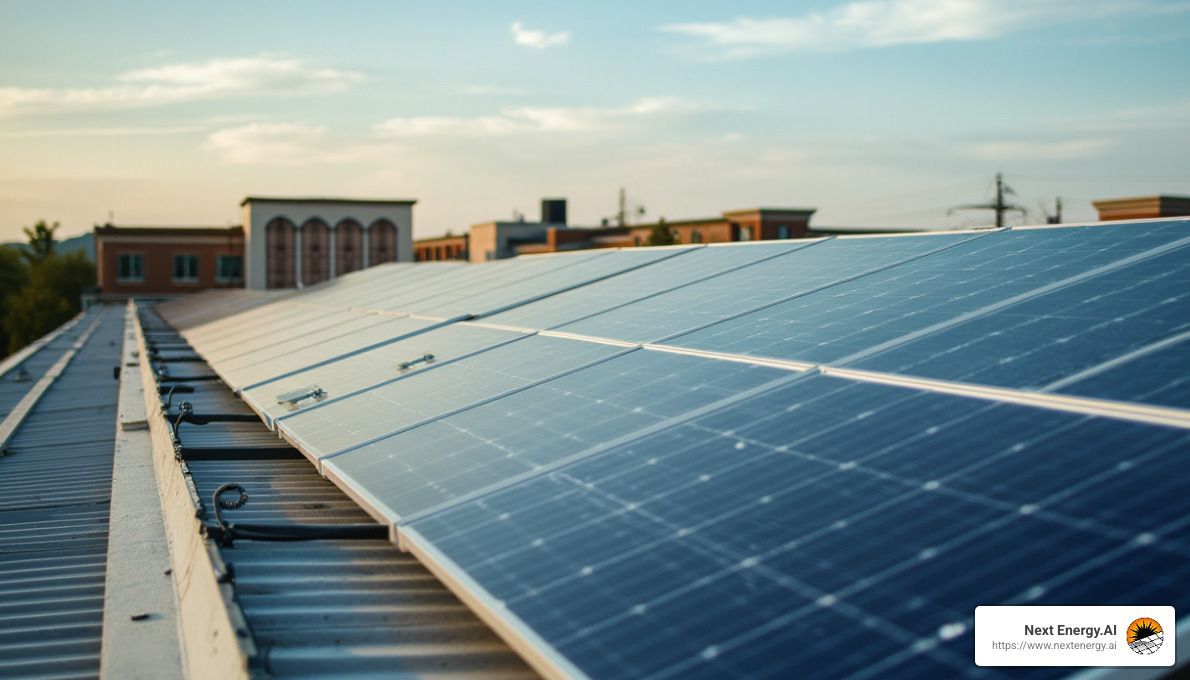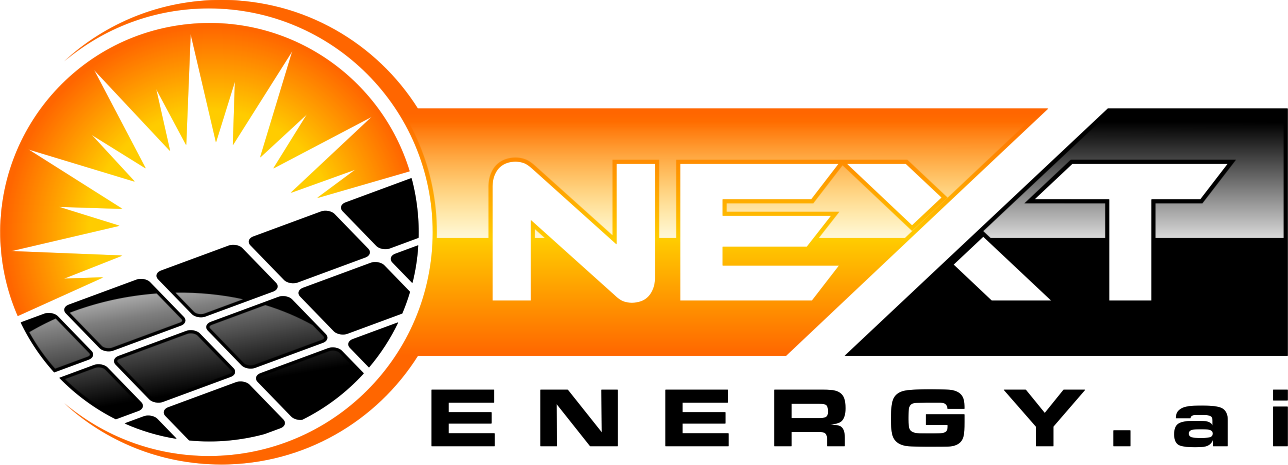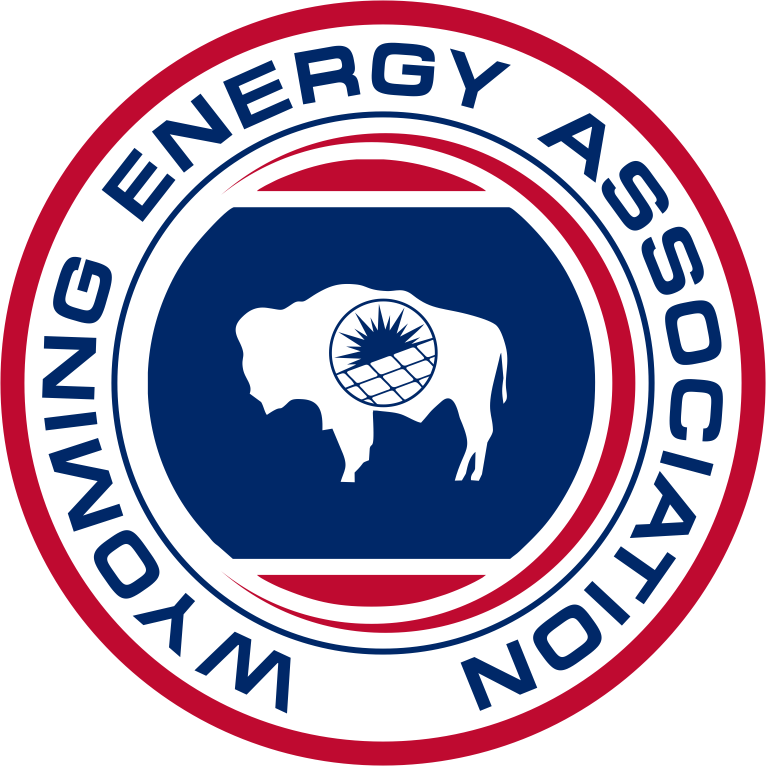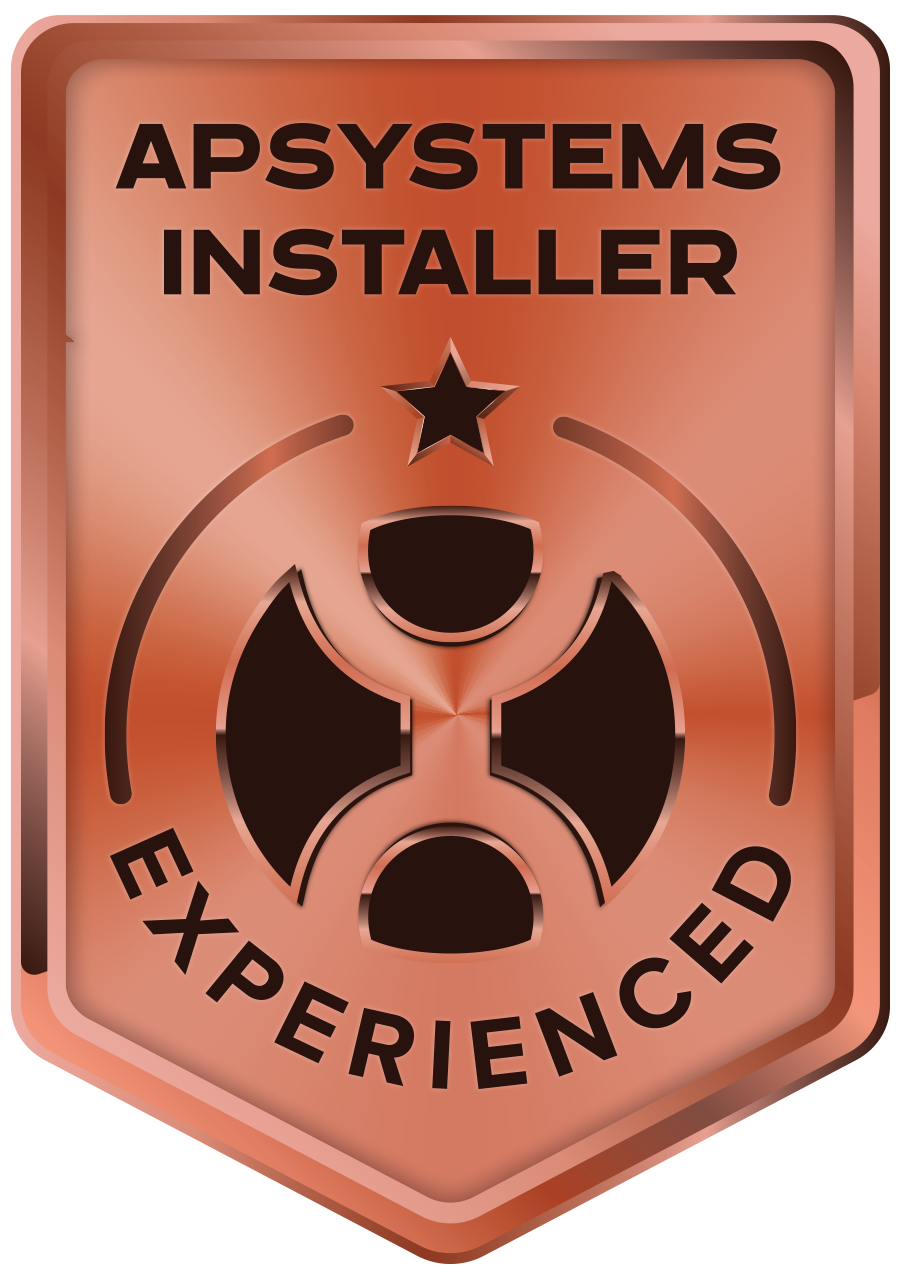Solar Power Boost: Controllers and Optimizers Reviewed
Solar panel controller and power optimization are essential elements for enhancing your home's energy efficiency and sustainability. With the rise of smart home technology, optimizing your solar system is no longer just for the tech-savvy but a crucial step for any homeowner looking to cut electricity costs and reduce carbon footprints. Whether it's selecting the right controller, configuring string settings, or using the full potential of your panels with optimizers, each plays a vital role in ensuring that your energy system operates at peak efficiency.
Here's a quick overview of what you'll find:
- Key Components: Understanding solar panel controllers, maximum power point tracking (MPPT), and power optimizers.
- Benefits: Reduced energy bills, increased energy efficiency, and seamless integration with smart systems.
- Tech Insights: How artificial intelligence (AI) improves solar power management and solutions.
Introducing myself, I'm Spencer Gordon, the CEO of
NextEnergy.ai. With expertise in solar panel controller and power optimization, my journey spans from technical schooling to founding a leading solar company in Wellington, Colorado. My mission is to bring sustainable energy solutions to homeowners, with a focus on local expertise and community support.
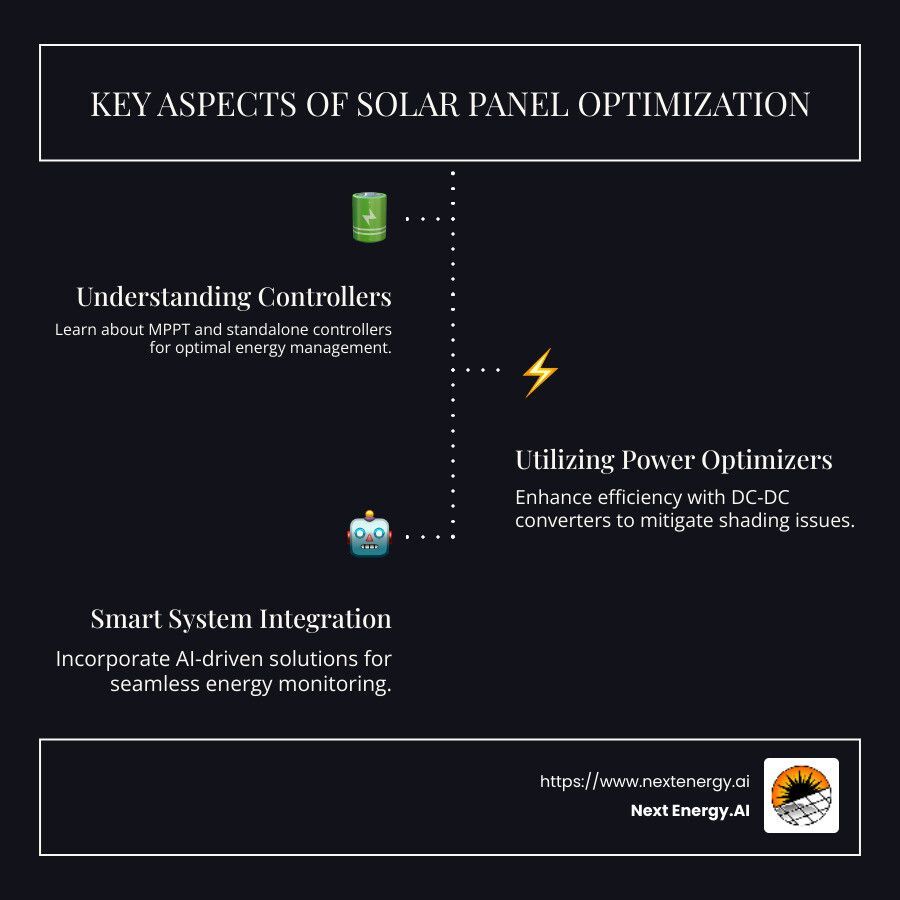
Understanding Solar Panel Controllers
Solar panel controllers are the heart of any solar power system. They manage the flow of electricity from your panels to your batteries and ensure everything runs smoothly. Let's explore two main types of controllers: Standalone MPPT Controllers and Integrated MPPT Controllers in Solar Inverters.
Standalone MPPT Controllers
Standalone MPPT (Maximum Power Point Tracking) controllers are often used in off-grid systems. They work alongside batteries to ensure you get the most energy possible from your solar panels. These controllers are particularly useful in systems where battery integration is crucial.
How do they work? Standalone MPPT controllers optimize voltage by adjusting the electrical operating point of the modules. This ensures that your solar panels are always working at their highest efficiency, even when the sunlight isn't perfect.
For example, if you have a setup with a 12V battery, the panel voltage should ideally be 1.5 to 2 times higher for optimal efficiency. This setup helps in capturing more energy during low-light conditions, a common challenge in off-grid systems.
One interesting case is the use of the 60A V119 MakeSkyBlue MPPT controller with four 545W panels. This setup can handle open-circuit voltages (VOC) up to 200V, allowing for efficient energy capture and storage.
Integrated MPPT Controllers in Solar Inverters
Integrated MPPT controllers are built into solar inverters, making them a compact solution for many homeowners. These controllers come in two flavors: low-voltage and high-voltage models.
- Low-voltage models are versatile. They typically connect three panels in series and allow for varying panel orientations. This flexibility means you can position panels facing east, south, and west, which is great for maximizing energy capture throughout the day.
- High-voltage models require 6 to 12 panels in a series string, with operating voltages ranging from 200 to 450V. These are often found in hybrid and off-grid inverters derived from large grid-tied systems. While they offer higher efficiency, they do require all panels to face the same direction.
A significant advantage of integrated MPPT controllers is their ability to optimize energy usage without the need for additional components. However, it's crucial to match your panel orientation and voltage requirements to get the most out of these systems.
In conclusion, whether you're using standalone devices or integrated inverters, understanding the nuances of solar panel controllers can significantly boost your system's efficiency. By optimizing voltage and configuring your panels correctly, you can ensure that your solar power system is always running at its best.
Power Optimization in Solar Systems
Optimizing the power output of solar systems is essential for maximizing energy efficiency. This section will explore two key technologies: Solar Panel Power Optimizers and Voltage Optimizers with Solar Panels.
Solar Panel Power Optimizers
Solar panel power optimizers are devices that improve the performance of each solar panel. They are DC-DC converters placed on the back of each panel, allowing for individual panel optimization. This technology is crucial for systems affected by shading conditions or panels with varying orientations.
How do they work? Power optimizers adjust the voltage and current of each panel to ensure maximum power point tracking (MPPT) is achieved. By doing so, they mitigate the effects of shading and other inefficiencies. This means even if one panel is shaded, the rest of the system can continue to operate at peak performance.
Performance Improvement: With power optimizers, energy production can be increased by up to 25% in systems where shading is an issue. This makes them a valuable investment for homes with trees or other obstacles that might block sunlight.
Voltage Optimizers with Solar Panels
Voltage optimizers are another tool for enhancing solar system efficiency. They work by reducing the energy reliance on the National Grid, making solar power systems more self-sufficient.
Energy Reliance Reduction: By maintaining optimal voltage levels, these optimizers ensure that solar panels operate efficiently, even during fluctuating sunlight conditions. This reduces the need for additional energy from the grid, which can lead to lower energy bills.
Investment Worth: While the initial investment in voltage optimizers might be significant, the long-term savings on energy bills can make them worthwhile. For homes aiming to reduce grid dependency, this technology offers a promising solution.
In summary, both power optimizers and voltage optimizers play a crucial role in enhancing the efficiency of solar systems. By addressing issues like shading and voltage fluctuations, they ensure that your solar panels produce the maximum energy possible.
Solar Panel Controller and Power Optimization
Expanding Solar Arrays
When it comes to expanding solar arrays, understanding charge controller selection is crucial. Charge controllers regulate the flow of electricity from the solar panels to the batteries. Selecting the right one ensures your system operates efficiently, especially during low generation periods.
For instance, if you're adding more panels to your setup, you might need additional controllers to handle the increased power. This is particularly important for homes with complex roof structures, where panels are installed at different angles or orientations.
Panel Voltage Matching: Ensuring that the voltage of your new panels matches the existing ones is vital. Mismatched voltages can lead to inefficiencies and reduced power output. Consider the case of a user who added panels with differing Vmpp (Voltage at maximum power point) values. The mismatched voltages led to a lower overall wattage, impacting the system's performance.
String Configuration: When configuring strings of panels, aim for balanced strings. This means each string should have panels with similar electrical characteristics. Balanced strings improve the efficiency of the Maximum Power Point Tracking (MPPT) and ensure optimal energy harvest.
Avoiding Common Mistakes
Effective solar system design is key to avoiding common pitfalls. Inverter compatibility is one such area where mistakes are often made. Ensure your inverter can handle the total wattage of your solar array. If not, it could lead to system overload and potential failures.
Battery Management: Proper battery management is another critical aspect. Overcharging or undercharging can reduce battery life and efficiency. Using an MPPT controller can help manage battery charge by adjusting the voltage and current to the battery's needs.
System Design: Poor system design can lead to inefficiencies and increased costs. Always consult technical specifications and consider factors like shading, orientation, and panel type. As noted in a case from the research, mixing panels with different technologies (like shingled versus non-shingled) can impact performance.
In summary, expanding solar arrays and avoiding common mistakes requires careful planning and consideration of various factors, including charge controller selection, panel voltage matching, and system design. By addressing these areas, you can improve the performance and reliability of your solar energy system.
Frequently Asked Questions about Solar Panel Optimization
Are solar panel optimizers worth it?
Absolutely! Solar panel optimizers can significantly reduce energy bills by ensuring each panel operates at its peak efficiency. These devices help mitigate the effects of shading and other factors that can limit the performance of your solar array. By optimizing the output of each panel, you can maximize your energy production and, over time, recoup your investment through reduced electricity costs.
What is the difference between MPPT and power optimizer?
MPPT (Maximum Power Point Tracking) and power optimizers both aim to maximize energy transfer, but they operate differently. An MPPT controller adjusts the electrical operating point of the panels to ensure maximum power output. It's like having a smart manager directing energy flow efficiently.
On the other hand, a power optimizer is a type of DC-DC converter installed at the panel level. It optimizes the output of individual panels before sending the energy to the inverter. This is particularly useful in systems where shading or panel mismatches are an issue. While both technologies aim to maximize energy transfer, power optimizers offer more granular control at the panel level.
Do I need a voltage optimizer with solar panels?
A voltage optimizer can be a valuable addition to your solar setup, especially if you're looking to reduce energy reliance on the grid. These devices ensure that your solar panels operate efficiently by maintaining optimal voltage levels. This not only supports system performance but can also lead to energy savings.
By integrating a voltage optimizer, you can improve the resilience of your solar system, making it less dependent on external energy sources and more self-sufficient. This can be particularly beneficial in areas with variable energy prices or during periods of high energy demand.
In conclusion, understanding the roles of solar panel optimizers, MPPT controllers, and voltage optimizers can help you make informed decisions about your solar energy system. By leveraging these technologies, you can optimize your energy production, reduce costs, and improve system performance.
Conclusion
At Next Energy.AI, our mission is to revolutionize how solar energy is used by integrating AI-improved solar solutions. With our advanced technology, we transform traditional solar panels into intelligent energy management systems, ensuring optimized energy usage for every home and business.
Our AI-improved solutions offer real-time monitoring and adjustments, maximizing the efficiency of your solar panels. This means you get the most out of your solar investment, reducing energy bills and minimizing reliance on the grid. Our approach not only boosts your energy savings but also contributes to a more sustainable future.
By choosing Next Energy.AI, you’re investing in a cleaner, smarter energy solution. Our services are designed to cater to the unique needs of our clients in Northern Colorado and Southern Wyoming. We pride ourselves on delivering personalized service, cutting-edge technology, and dedicated support to empower your transition to solar energy.
Explore how our AI-driven solutions can transform your solar energy experience. Contact us today to learn more about our comprehensive solar solutions and take the first step towards a more sustainable future.
Together, let's harness the power of the sun to fuel your future with clean, efficient energy.



